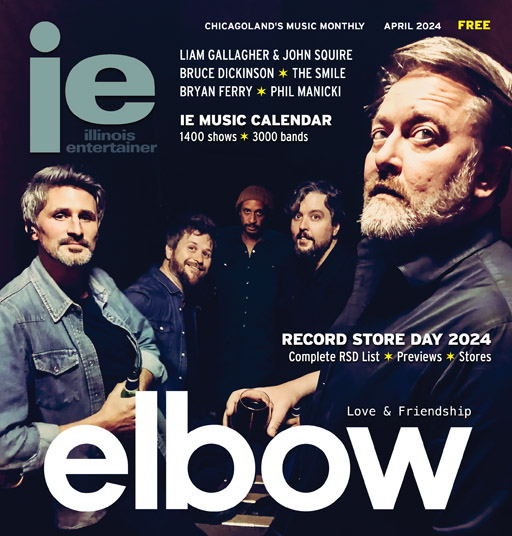Rock Accessories
I’d always thought that rock’s major accessory was sex. But a recently published book, Paul Grushkin‘s lavishly illustrated coffee table tome Rockin’ Down The Highway (Voyageur), has given me second thoughts. Grushkin makes a convincing case that rock’s main accoutrement is the automobile. Cars have always loomed large in the public imagination in America, as much as symbols of freedom and masculine sexuality. In the early 1950s guys were souping up their hotrods, interstate highways were proliferating, and rock ‘n’ roll erupted. Among the nominees for the first rock ‘n’ roll records are the double-entrendred “Rocket 88” by Jackie Brenston & His Delta Cats and Chuck Berry’s “Maybellene” – a paean to the Coupe DeVille. The era’s doowop groups also had keys to the highway, sporting monikers like The Cadillacs and The Eldorados.
Cars remained a fixture of rock songs and Grushkin seems to include them all, like Commander Cody And His Lost Planet Airmen’s cover of “Hot Rod Lincoln,” Jonathan Richman‘s “Roadrunner,” and Bob Seger‘s “Making Thunderbirds.” Hundreds of luscious color shots of rockers and their rides, records and album covers, and concert posters are displayed spanning genres from rockabilly to rap. One of the book’s few black-and-white photos is of Sam Phillips presenting a Cadillac to Carl Perkins (but you can’t tell if his suede shoes were blue). Grushkin offers photos of surfer guys with their woodies (the wood-sided station wagons used to lug their boards to the surf), ZZ Top’s iconic custom car, and several images of a lean-and-hungry Bruce Springsteen, who mined the ride as a metaphor of freedom.
But not all born-in-the-U.S.A. rock obsesses over cars. One style of rock has another ornament so prominent it lends itself to the name of the genre: hair metal. Steven Blush’s American Hair Metal (Feral House) features dozens of musicians sporting the colorful, highly-coifed, curled-and-teased tresses loved by MTV and millions of fans in the 1980s. The book’s frontispiece, a can of hairspray, readily gives the idea that for Blush, and perhaps for the stars and fans, the music is not the message. He gives but a brief nod to the genre’s sound: “every Hair Metal band had varying degrees of Led Zeppelin, Aerosmith, AC/DC, KISS, and Van Halen in them.” This is basically a picture book, as it should be, and big hair is front and center, every shot showing where blame for the hole in the ozone layer should be placed. Lipstick, mascara, and eyeliner are as central to the image as the gravity-defying dos. But so many of the quotes from the (in)famous performers seem to indicate their focus, unlike the camera’s, is neither their looks nor their music. Their obsession is, surprise, surprise, sex. “That’s the reason you get into a rock band, right? To get laid and to get free booze,” Mötley Crüe singer Vince Neil avers. Erik Turner from Warrant has the same obsession: “I got into rock ‘n’ roll to get girls. I kept seeing all these ugly guys in rock ‘n’ roll with all these women, and figured I was no uglier.” Rikki Rocket of Poison adds: “If by a groupie you mean a girl that fucks any guy just because he’s in a band – if that’s what it is – then I love it! Otherwise, I’d never get any!!”

Blush reports these “bands put considerable effort into getting chicks” but they probably put in more time telling the press about their sexual exploits. Ratt made sure everyone knew their tour bus had a condom vending machine; Poison broadcast that they traveled with their “groupie computer.” Is that the reason for their public focus on sex? “After a while, it wasn’t about sex anymore for the guys because they had so much of it. It became about who could do the wildest stuff,” says a member of the less-than-well-known Sweet Pain.
Hair metal’s embrace of decadence stands in sharp contrast to musicians who use the music as a minor accessory to embellish the real thing – Christianity. In Body Piercing Saved My Life (DaCapo) Andrew Beaujon takes a year-long odyssey through the “parallel universe” known as Christian music. Selling more records than classical, jazz, and new age combined, it “is the only music that’s categorized by the lyrical content as opposed to the musical side.” It includes artists who also appeal to non-religious audiences, like Chevelle, P.O.D., Pedro The Lion, Switchfoot, The Rez Band, and Amy Grant. The book’s title, taken from a popular T-shirt seen at the major Cornerstone festival, references not the stylish facial studs but the nails gorily glorified by Mel Gibson in his Passion Of The Christ. Beaujon, who claims to have had no prior experience with religion, visited Christian festivals, award ceremonies, and churches with great sound systems, and interviewed the industry’s various movers and shakers. His most interesting profile-interview is Pedro The Lion’s David Bazan, a rare think-for-himself person, influenced as much by Fugazi as by his close reading of the Gospels. Least appealing is Brandon Ebel, the very successful owner of the Tooth & Nail label, which he modeled after Sub Pop. Lacking any trace of humility, despite the overtly Christian music he releases, many of his quoted statements end with “Don’t put that in your book.”
Beaujon is an unreliable author. At the end of the book, he sheepishly admits he lied when he said he had no experience with religion – his father was an Episcopalian priest disgraced by a sexual affair. Also, he indicates, unlike most popular music, sexual controversy in Christian music has a negative effect on sales; “sex does not sell.” But he also stresses the strong sexual overtones at the musical church services he observed. O.K., maybe sex is the major accessory.
– Deena Dasein










sometimes people should just shut up, instead of speaking of things they don’t know about… it could be a scandal..
totally ols school……. switchfoot`s a great band though..